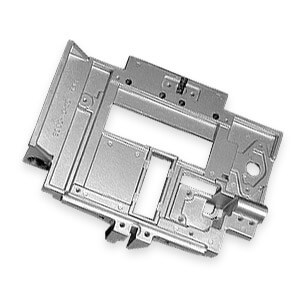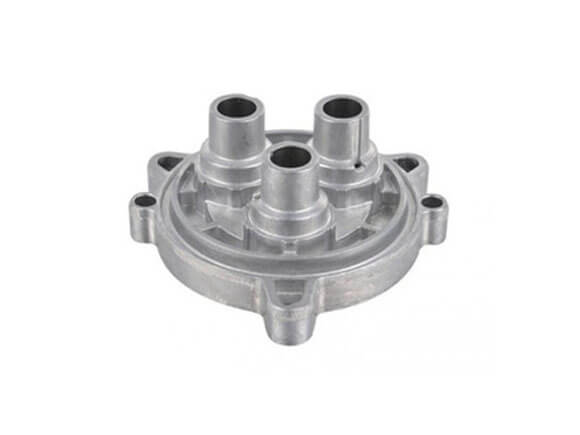Aluminum Casting Explained: Secret Facts and Insights for Sector Professionals
Aluminum casting works as an essential procedure in modern manufacturing, shaping components throughout various sectors. Its varied methods, such as sand and die casting, accommodate various production needs. The unique properties of aluminum alloys boost their applicability, yet tests remain in preserving top quality and effectiveness. Comprehending these aspects is crucial for industry professionals. What are the most recent advancements and ideal methods that can even more enhance this procedure?
Summary of Aluminum Casting Processes

Crucial element of aluminum casting processes consist of the prep work of molds, which may be made from sand, steel, or ceramic products, depending on the intended usage. Furthermore, temperature control is critical to ensure proper melting and solidification of aluminum.
The casting process permits for complex layouts and can achieve high degrees of dimensional precision. As soon as cooled down, the castings might undertake finishing procedures such as machining or surface area therapy to satisfy specific performance requirements. On the whole, aluminum casting functions as a versatile manufacturing technique, successfully satisfying the varied demands of different markets.
Kinds of Aluminum Casting Techniques
In the domain name of aluminum casting, numerous approaches are used to attain various results. Sand casting strategies supply versatility and cost-effectiveness for complex shapes, while die casting processes offer high precision and performance for mass production. Recognizing these techniques is vital for selecting the proper strategy based on job demands.
Sand Casting Strategies
Sand casting strategies represent an essential method in aluminum casting, where sand is used as a mold and mildew material to shape liquified metal. This process involves creating a pattern from the desired component, which is after that positioned in a sand blend to form a mold and mildew. The sand is compacted around the pattern, and after removal, it produces a dental caries in the form of the component. Molten aluminum is poured into this tooth cavity, allowing it to solidify and cool down. One substantial benefit of sand casting is its flexibility; it can fit complicated forms and big elements. In addition, the products made use of are relatively inexpensive, making it an available alternative for various production applications in the aluminum market.
Die Casting Processes
Die casting processes are a famous method for forming aluminum parts, making use of high-pressure methods to force molten metal right into precisely engineered mold and mildews. This procedure is specifically preferred for its capacity to produce complicated shapes with tight resistances and a smooth coating. There are 2 main sorts of die casting: warm chamber and cool chamber. Hot chamber die casting is suitable for metals with reduced melting factors, allowing for faster production rates. Alternatively, chilly chamber die casting is excellent for higher melting point steels, calling for a separate melting heater. Both approaches boost effectiveness and reduce material waste, making them essential in automobile, aerospace, and customer goods industries. Understanding these processes helps professionals pick one of the most appropriate strategy for their certain applications.
Product Quality of Aluminum Alloys

Stamina and Longevity
Toughness and resilience are essential features of aluminum alloys that make them appropriate for various casting applications. These products exhibit a desirable strength-to-weight proportion, enabling the creation of lightweight yet durable parts. With respect to tensile strength, specific aluminum alloys can be engineered to hold up against significant tons without warping. This residential property is especially essential in markets such as aerospace and automotive, where efficiency and safety and security are extremely important. In addition, aluminum alloys often retain their mechanical homes under varied temperature level conditions, making certain regular efficiency. The inherent ductility of these alloys additionally enables effective shaping during the casting procedure, making it much easier to create complex geometries. Overall, the stamina and sturdiness of aluminum alloys contribute significantly to their prevalent usage in sophisticated applications.
Deterioration Resistance Characteristics
While aluminum alloys are prized for their stamina and light-weight buildings, their rust resistance is an additional important characteristic that boosts their suitability for various applications. Aluminum normally creates a protective oxide layer when revealed to moisture, which aids to stop more oxidation. This inherent property makes aluminum alloys specifically important in atmospheres vulnerable to deterioration, such as marine and commercial setups. In addition, various alloy make-ups can affect resistance degrees, with particular alloys especially engineered to enhance this characteristic. Therapies like plating can additionally enhance corrosion resistance by thickening the oxide layer. Recognizing the corrosion resistance of aluminum alloys is vital for sector professionals when picking products for projects needing sturdiness and longevity in difficult environments.
Benefits of Aluminum Casting in Production
Aluminum casting offers numerous benefits in production, making it a favored choice for numerous markets. One significant benefit is its light-weight nature, which contributes to lowered transportation prices and enhanced power effectiveness in final product. Aluminum's superb thermal and electrical conductivity improves functionality in applications requiring warmth dissipation or electric transmission.
The product's capability to be cast right into intricate forms permits for style flexibility, minimizing the demand for additional machining procedures. In enhancement, aluminum casting shows premium deterioration resistance, causing longer product life expectancies and lower maintenance expenses.

Common Applications of Aluminum Castings
The convenience of aluminum casting enables its extensive use across various sectors. Usual applications consist of automobile components, where lightweight and corrosion-resistant parts, such as engine blocks and transmission housings, improve lorry performance. In the aerospace industry, aluminum castings are utilized for structural elements, using toughness without adding significant weight.
Furthermore, the electrical industry advantages from aluminum spreadings in making rooms and warm sinks, where thermal conductivity is crucial. The durable goods industry additionally includes aluminum spreadings in items like kitchenware, furnishings, and ornamental items, combining visual appeals with functionality.
The building and construction market utilizes aluminum castings for architectural elements, home window frameworks, and components, which supply resilience and style flexibility. Generally, the diverse applications of aluminum spreadings emphasize their significance in contemporary manufacturing, adding to innovations in efficiency and product design throughout multiple areas.
Technologies and Technological Innovations
As sectors remain to advance, technologies in aluminum casting modern technology are transforming manufacturing procedures and item capacities. Advancements in 3D printing and additive manufacturing have made it possible for the development of intricate geometries that were previously difficult to achieve with typical methods. These technologies enable fast prototyping, lowering lead times and expenses.
Additionally, enhancements in mold layout and products have improved the casting process by increasing effectiveness and minimizing waste. The combination of clever manufacturing methods, such as IoT tools and real-time information analytics, allows for far better monitoring and optimization of production criteria, leading to better results.
In addition, developments in aluminum alloys offer enhanced strength, rust resistance, and light-weight residential or commercial properties, satisfying the growing needs in aerospace and click reference automotive sectors. Jointly, these developments are not just boosting performance yet also meeting the extensive standards of modern design applications.
Finest Practices for Quality Control in Aluminum Casting
Making sure premium results in aluminum casting calls for adherence to finest practices that incorporate various phases of the manufacturing procedure. Extensive material inspection is essential to validate the top quality of aluminum alloys utilized, as pollutants can considerably influence the final item. Implementing exact melting and putting techniques minimizes defects; maintaining optimal temperature levels stops oxidation and promotes uniformity.
Moreover, mold layout plays an essential role; utilizing computer-aided layout (CAD) can enhance precision and minimize human mistake. Normal tracking of the cooling procedure is essential to prevent warping and contraction. Additionally, using non-destructive testing methods, such as ultrasonic or X-ray assessments, assists identify inner defects without damaging the elements.
Developing a comments loop with drivers and designers promotes constant improvement, making certain that top quality control steps evolve alongside technological improvements. By complying with these best methods, producers can improve the dependability and efficiency of aluminum spreadings.
Frequently Asked Inquiries
What Are the Environmental Impacts of Aluminum Casting?
The ecological impacts of aluminum casting consist of considerable energy usage, greenhouse gas emissions, and potential water pollution from factory operations. In addition, bauxite mining for aluminum ore can cause environment destruction and soil destruction.
Just How Does Aluminum Casting Contrast to Various Other Metal Casting Processes?
Aluminum casting usually uses advantages in light-weight elements and rust resistance contrasted to various other procedures, such as iron or steel casting, which may give higher stamina but result in heavier and much less corrosion-resistant products. - Aluminum Foundry
What Are Common Flaws in Aluminum Castings and Their Reasons?
Common problems in aluminum castings include porosity, shrinkage, and additions. Reasons usually stem from incorrect putting methods, content inadequate mold and mildew design, or contamination of the liquified steel, influencing the end product's integrity and efficiency.
What Security Precautions Should Be Taken During Aluminum Casting?
During aluminum casting, essential safety and security preventative measures consist of wearing safety gear, making certain correct air flow, keeping a tidy office, taking care of molten steel with care, and adhering to recognized protocols to decrease dangers of burns, inhalation threats, and crashes.
Just How Can I Boost the Effectiveness of My Aluminum Casting Operations?
To enhance performance in aluminum casting operations, one must optimize mold design, streamline material handling, use automated processes, carry out routine upkeep on equipment, and buy employee training to enhance skills and performance.
Different approaches exist, aluminum casting encompasses numerous primary processes that cater to different applications and requirements. Trick components of aluminum casting processes include the prep work of mold and mildews, which might try this website be made from sand, metal, or ceramic materials, depending on the meant use. Sand casting strategies stand for a basic method in aluminum casting, where sand is utilized as a mold and mildew material to form liquified steel. As sectors continue to evolve, developments in aluminum casting technology are changing manufacturing procedures and item abilities. Making sure top quality outputs in aluminum casting requires adherence to best methods that encompass different phases of the manufacturing procedure.